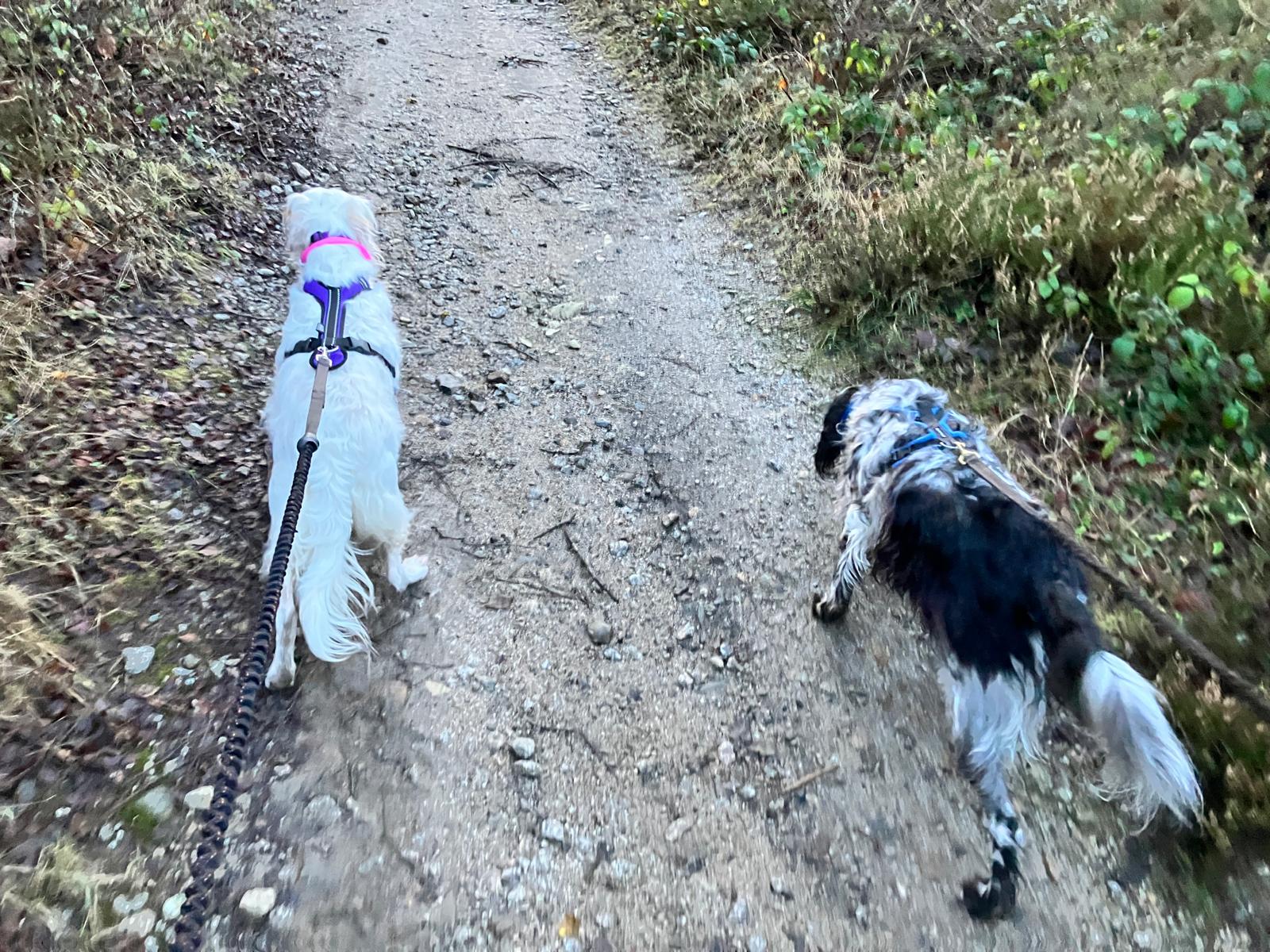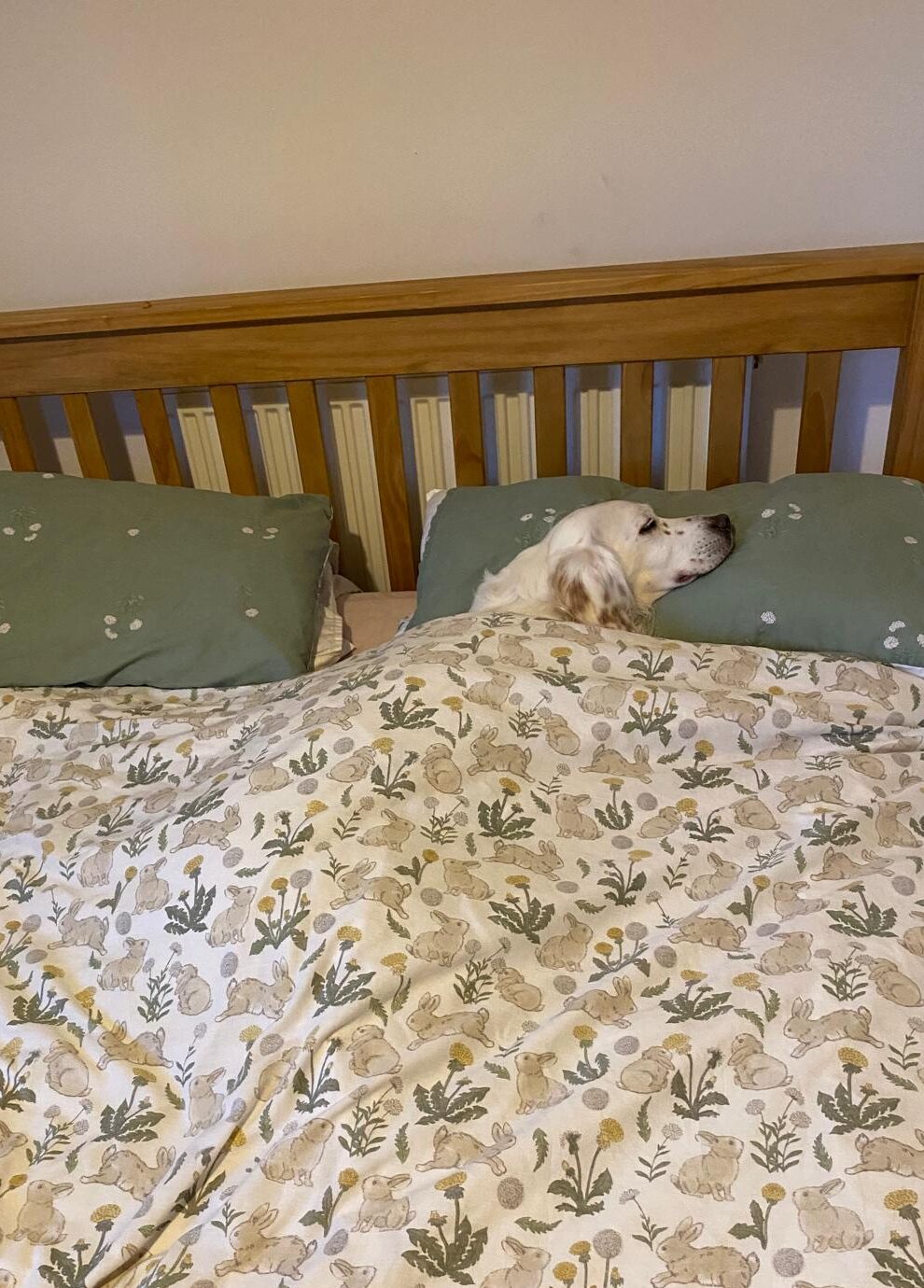How to introduce your rescue to your resident dog
Bringing home a new dog is an exciting and emotional experience, especially when you already have a resident dog at home.
A good introduction will help to set you, your current dog and your new arrival up for success going forward.
So, here’s how to help make that first meeting (and beyond) a positive experience for everyone.
Firstly, don’t take your resident dog to the collection point. If you really do have to, then make sure that they are separated for the journey home (one in the boot, one on the backseat) and can’t get to each other.
1. Choose a neutral meeting place
When you get home: the best introductions happen outside the home, ideally in a quiet, neutral location like a nearby park, secure field or even just a quiet road. This puts less pressure on your resident dog and your new arrival.
Tip: Each dog should be on a lead, handled by a calm adult, with some distance between them to start.
2. Start with a parallel walk
Walk both dogs in the same direction, several feet apart, without letting them greet just yet. Gradually decrease the distance as they grow more comfortable with each other’s presence. This allows them to communicate through body language and scent – without the pressure of a face-to-face encounter.
3. Allow a controlled introduction
After a calm walk, you can allow a brief, nose-to-rear greeting. Keep leads loose to prevent tension, and watch both dogs’ body language. Signs of a good first impression include soft bodies, wagging tails (not stiff), and interest without fixation.
Avoid direct, face-to-face greetings at first – those can feel confrontational to some dogs.
4. Bring them home
Once they’ve met peacefully, bring them home, but don’t assume they can be left alone together right away. Whilst the dogs are still adjusting:
- Feed them separately – your new dog may well be protective of their food so feeding in different rooms means they can relax whilst eating.
- Provide each dog their own space, including beds and toys, that they can retreat to
- Supervise all interactions.
Tip: If needed, use baby gates or exercise pens to keep them separate, divide rooms and create safe boundaries while allowing them to see and smell each other.
5. Watch for warning signs
It’s not going to be perfect from day one, and that’s okay. But keep an eye out for these signs of stress or discomfort:
- Growling, lip curling, or stiff posture
- Excessive staring
- Snapping or lunging
If you see any of these, calmly separate the dogs and give them a break. Don’t punish growling – it’s an important communication tool – instead reward good behaviour.
6. Be patient and positive
It can take days or even weeks for dogs to build trust and adjust. Use positive reinforcement (treats, praise) for calm, polite behaviour. Go slow, and don’t rush the process.
7. Know when to ask for help
If introductions aren’t going well, or either dog shows signs of fear or aggression that don’t improve, don’t hesitate to reach out to your rehomer.
Final thought
Every dog is unique, and so is every introduction. With time and patience, many dogs learn to live peacefully together – and often become the best of friends.
If you need more advice about introductions, or support whilst you’re going through it, please reach out to your rehomer for help.




